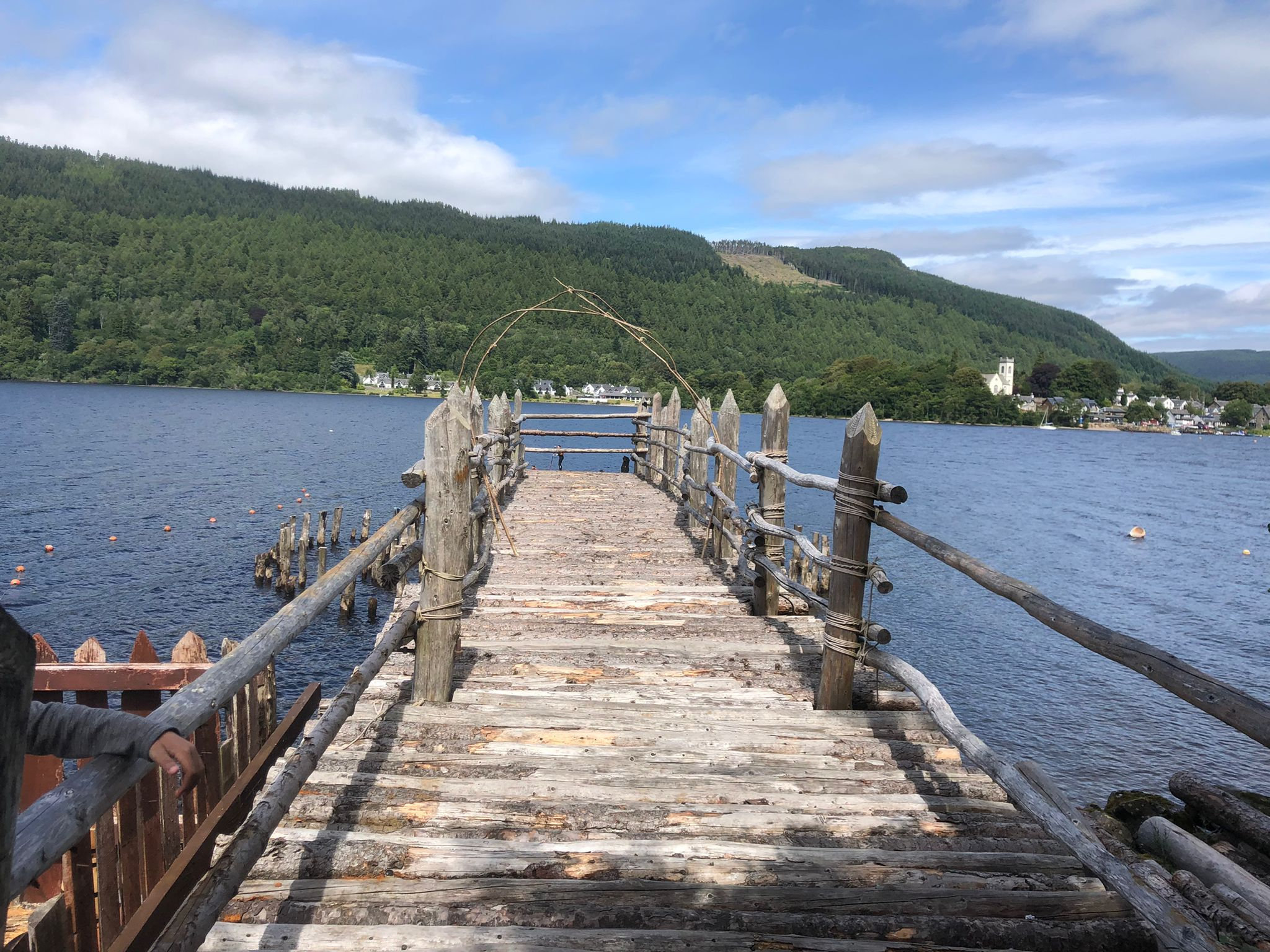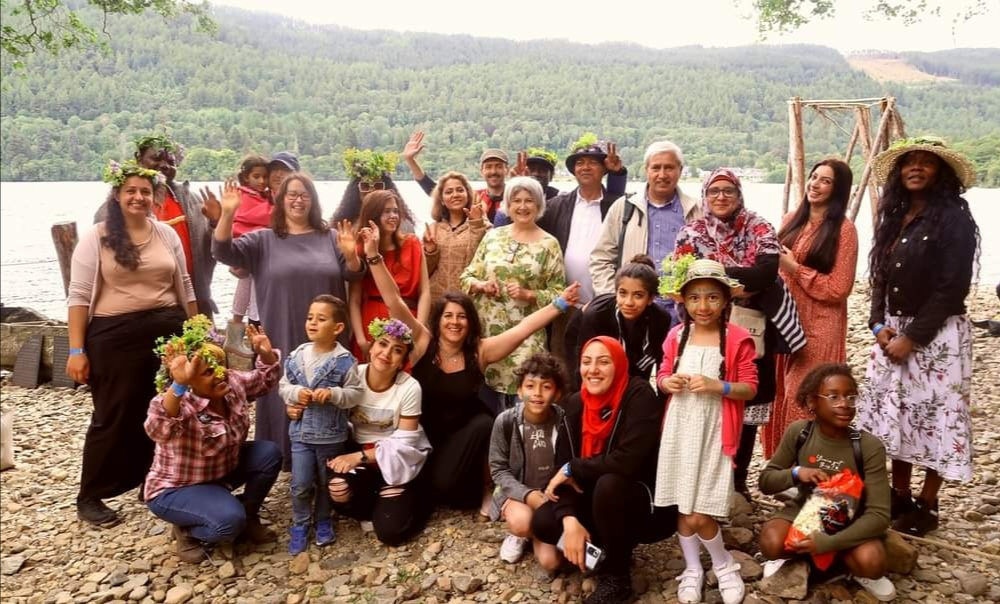
NAVIGATING the asylum process is not easy.
People experience stress and unknowns daily. While seeking asylum, people are banned from working which means they are not able to share their experience, expertise, and contribute to society. For many people, this may mean waiting in the process for years, unable to plan a future, meet new people and continue with your life. It means living with the constant knowledge of all that has been left behind and separations and loss.
Navigating the education system for asylum seekers is not easy. Whilst for those who can a place at college or in school are possible, but if they want to attend University they will be treated as international students which means they are expected to pay thousands of pounds to go to university. Although there are scholarships available, they are very limited in numbers.
And so, another barrier is erected, for a people already surround by stifling borders, in any attempt to plan for a future.
For those who are newly arrived in communities in Scotland the accommodation and housing crises which has led the Scottish Government to pause the Ukrainian supersponsorship scheme, sees people living for months and months in hotel accommodations across the country. A hotel is not a place from which a new life in a community can be attempted, it’s not in concert with the New Scots Integration Strategy which stresses integration as a whole society endeavor.
Being isolated from local communities, far away from connection and support is devastating to already isolated people. This changes “welcoming” into “unwelcoming”. It removes easy, embedded opportunities for people to meet the local community, take part in activities, learn a new language, and express themselves. To be accorded the kind of human dignity each of us would wish for ourselves, and hopefully for others.
These three factors raise questions about basic rights – the right to work, education and shelter. Removal of these hard-won rights creates many new ways of discriminating against people and also forcing people into extreme poverty, destitution, and closing down possibilities for the future.
On the one hand there is a significant job to be done, by statutory providers, in ensuring the delivery of services that ensure integration into the basics of health, education, accommodation, language, security. This is largely the responsibility of the state, local authorities, and those now in receipt of government contracts to provide accommodation, for example.
On the other hand, the more intangible cultural work is that of ensuring we all live within and can enjoy restorative, vibrant spaces that constantly welcome new people in and do so with understanding of the concerns they are going through as well as celebrating every moment of joy.
This is the work that community organisations like Maryhill Integration Network (MIN) create for others and for themselves.
Since 2001, MIN has brought people seeking asylum, refuge, and the local community together by providing a welcoming, safe, and inclusive space. It does so by placing people at the centre of projects, understanding cultures, traditions, and languages.
The charred remains of an Iron Age Crannog on the banks of Loch Tay in Highland Perthshire, seems a very long way from the experiences of refugee integration and celebration of cultures happening in Maryhill in Glasgow.
Last year, a fire destroyed the Crannog, known and loved by many visitors and locals, and not least by those who had their livelihoods within its bounds. The fire did more than destroy a uniquely special space, it also took away a part of the crannog’s sense of belonging.
It dramatically changed the story of the Crannog from one of a certain continuity as a site of experimental archaeology and presentation of finds in a museum, to one which needed to contain an unthinkable story of loss – a story of when the Crannog was destroyed by fire. Because this is what had happened.

It was as if the ashes from the fire scattered a culture and language over Loch Tay and far away. It was, as in the face of all forms of loss, hard to find words to express what it meant. Shock does this. It robs you of speech and the ability to make meaning. The people experienced a sense of loss just as the people who are on the move fleeing war and persecution experience profound loss and are often lost for words.
It would have been easy for The Crannog to close, to give up, or to turn inward, but not only did they stay open for business, they concentrated on working to restore the place of hospitality they had created with a greater vision and a wider generosity of spirit to many who had had experiences not dissimilar to their own.
It is perhaps no accident that it was at this point in the Crannog’s own story that they began to make new friends with those who had themselves become homeless, had had to flee their homes, had seen their towns and villages destroyed.
In encounters with those who have sought refuge in Scotland, the Crannog came alive in new ways. New stones were added, gifted by Hyab Yohannes, a survivor of torture and trafficking who could see a place of restoration for precious objects he held as reminders of atrocities in his own country. The quartz of Loch Tay spoke to the quartz of East Africa in an action that reversed the normal patterns of colonial theft, with gift and co-curation.
If you visit the Crannog, you will find this story, co-created amongst the many intriguing finds in the Crannog Museum.
And the broken shards of pottery awaiting cleaning and preparation for the move to the new site for the museum, offered an opportunity for The Crannog Centre to invite members of MIN for a day trip to Loch Tay, and to welcome people, literally from all over the world.
This ignited a sense of belonging to a place of healing for the visitors, kindling new relationships out of the ashes.
Welcoming.
EEXPERIENCING the difficulties of everyday life while seeking asylum is not easy. Continuing to talk about concerns and problems is not easy. People want to live a normal life, connect with each other, provide for themselves, and share their cultures.
Being welcomed at the Crannog Centre enabled members at MIN to take a break from their ongoing worries, to lay their burdens down for a day. More than 25 people made the journey and what a journey it was, an antidote to those made when fleeing. The singing started in Glasgow and continued for nearly two hours until the bus arrived.
Everyone at MIN was welcomed by the staff at the Crannog Centre. From a warm smile and hospitality to engagement with the people making their livelihoods in the centre, the sense of being welcomed was the opposite of the hostility created by the Home Office’s policy of a hostile environment and enforced by the new Nationality and the Borders Act.
Group members met new people, different people, kind people, experienced people, old people, young people, and people who’d known loss through the fire and were learning to tell its story safely.
They were invited to learn about the history of Scotland before the colonisations that had taken root in so many of the countries the visitors had come from. It enabled everyone to place themselves into a different history and a different geography, making a new world with possibilities.
The pottery session enabled people to express themselves by creating traditional objects using the clay and, to their pride, some of those will be displayed at the Crannog Museum.
The visit to the Museum was fascinating as similarities with some cultures were immediately apparent to many people – especially with traditional objects and materials used in Scotland and “back home”. It was also a friendly atmosphere for children.
It can be difficult for the children to understand why their parents are not allowed to do certain things or to find answers to certain questions, to be constantly held within borders and boundaries, but at The Crannog, the children were freely running around, being creative and making new friends, laughing and being children, rather than forced, as so many who seek asylum are, to be old before their time.
It’s nearly a month since MIN’s first visit to the Crannog and people are still talking about the trip. People are still singing and saying: “It was the best day ever.”
The idea of being outdoors and in nature without the worry of the Home Office is a temporary escape for some people from the harsh realities of everyday life. For others, it also offered the possibility to reconnect with their roots and to see similarities across borders and be able to express themselves freely by understanding very different aspects to Scottish history, than those of colonialism.
From ashes to new possibilities, the Crannog Centre is recognising the importance of intercultural connections, of love across borders and is welcoming people to learn, reflect and create new beginnings together.
Who knows what the next visit will be, but one thing is sure, there will be singing.
Pinar Aksu is Unesco RILA PhD student at the University of Glasgow and Human Rights and Advocacy Co-ordinator with Maryhill Integration Network
With contribution by Anastasia Maria Tariq, Development Officer, Maryhill Integration Network; Alison Phipps, Unesco Chair for Refugee Integration through Languages and the Arts, University of Glasgow







